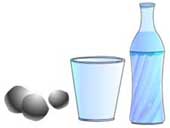|
 Changing
Buoyancy Changing
Buoyancy
What I need:
Some clay balls, A glass, A bottle of soda
What I do:
Pour a soda into the glass. Then quickly put a tiny ball of clay into it.
What I observe: - - - - - - - - - - - - - - - - - - - - - - - - - - - - - - - - - - - - - - - - - - - - - - - - - - - - - - - - - - - - - - - - - - - - -
- - - - - - - - - - - - - - - - - - - - - - - -.
The question that occurs to me: - - - - - - - - - - - - - - - - - - - - - - - - - - - - - - - - - - - - - - - - - - - - - - - - - - - - - - - - - - - - - - - - - - - - - - - - - -- - - - - - - - - - - --.
 Here is an analysis: Here is an analysis:
|